What does a scoop look like on tomatoes and how to deal with it?
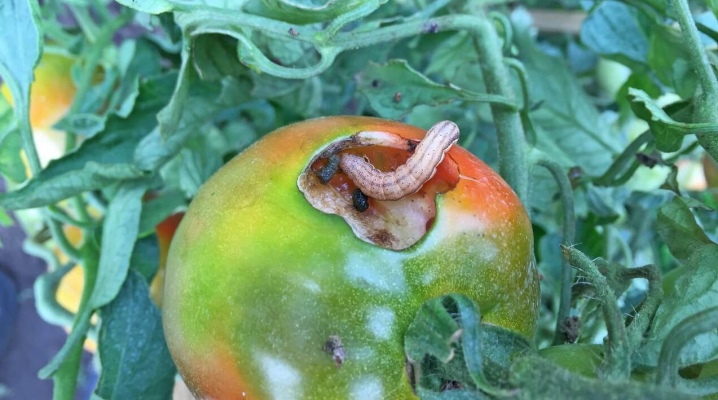
Tomatoes, like many other vegetables, are susceptible to various diseases and pest attacks. One of these parasites is tomato scoop, which can destroy up to 20% of the crop. We will consider its description, types and methods of dealing with it in this article.

Description and types
The scoop, or bat, is an insect that belongs to the largest family of Lepidoptera. The family includes about 1000 genera and 12000 species. The scoop is a small butterfly with a round head and two pairs of wings. It has a dull color and a triangular shape, folds its wings horizontally along the body and leads a nocturnal or evening lifestyle, lays eggs 0.3 mm long.
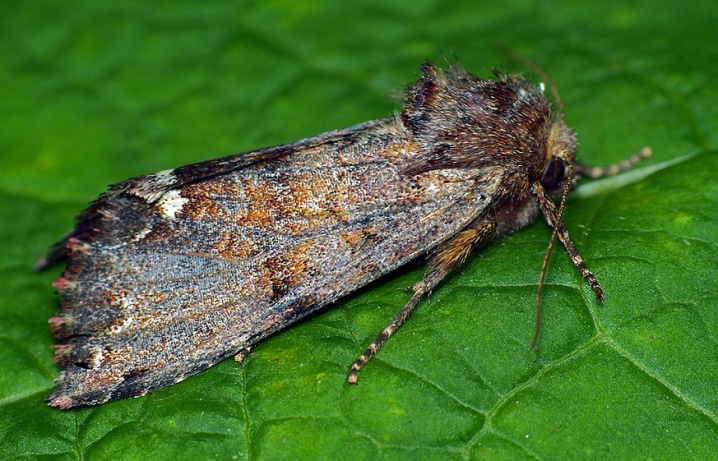
The scoop lives up to 6 instars, accompanied by molts. It goes through several stages of development from larva to butterfly. They winter well in the phase of pupa, eggs and even caterpillars. The length of the caterpillar is 3-4 cm with different colors depending on the species. It can be from light gray to black.
In nature, there are several types of scoops that can infect tomatoes.
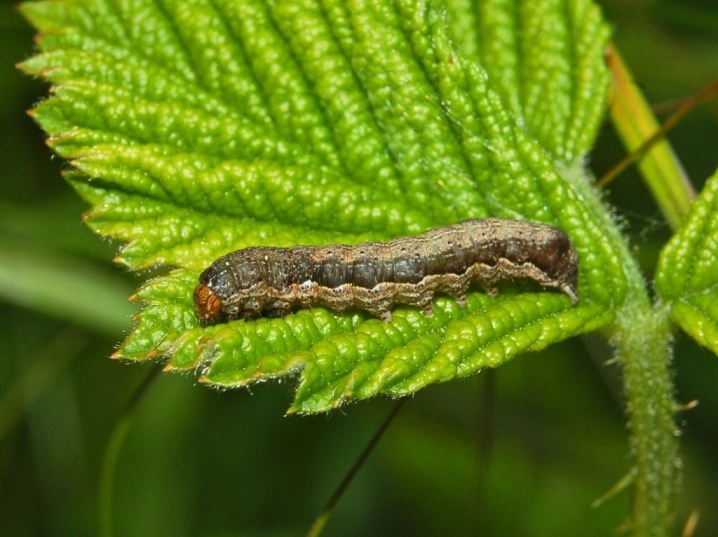
Cotton
The scoop is an omnivorous pest, which is a butterfly with a wingspan of 3-4 cm. Its color can be gray-yellow with reddish, green or other shades, in the center of the wings there is a dark spot similar to a sickle. The caterpillar itself is covered with small growths, in the form of thorns. The body has three dark horizontal stripes at the top and one yellow at the bottom.
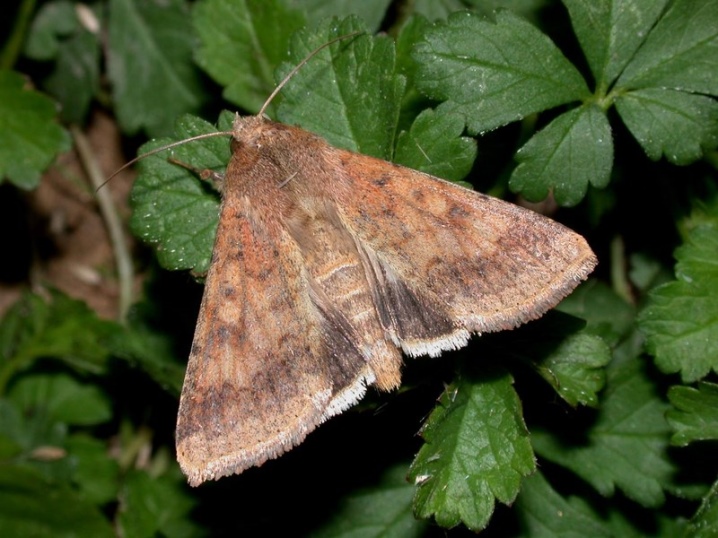
At the beginning of its ripening, the scoop feeds on leaves, then eats stems and tomatoes. Its fertility is large enough - from 200 to 300 eggs. The entire cycle of its development from an egg to an adult butterfly depends on the ambient temperature, but on average it is 30-35 days, 13-22 days of which falls on the maturation of the larva.
The harmfulness threshold for tomatoes is 10-12 larvae per 100 bushes, only in this case they pose a threat to this crop.
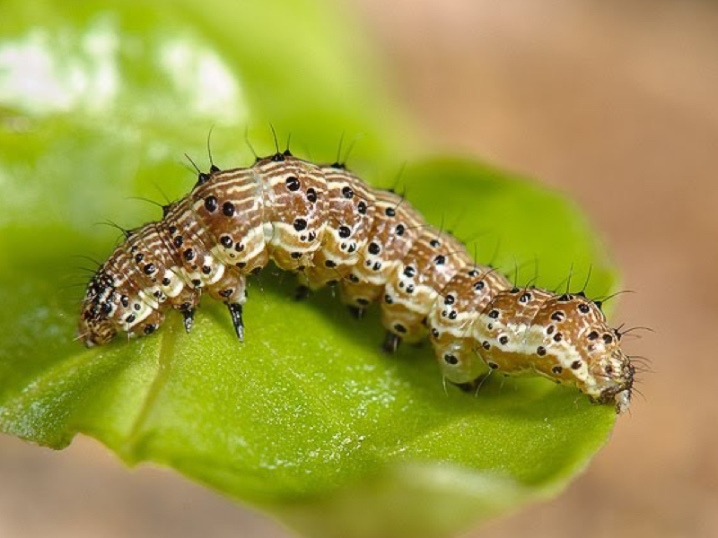
Scoop-gamma
Lives in almost the entire European part of Russia, it affects more than 100 species of cultivated plants, including tomatoes. The pest can be gray or brown with a purple tint. The wingspan of a butterfly varies from 4 to 4.8 cm.
It got this name because of the spots that are on the front pair of wings and resemble the Greek letter "gamma".
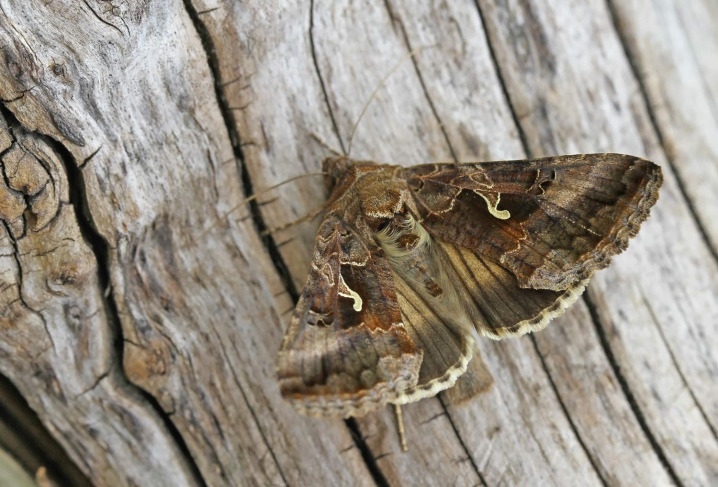
Caterpillars that eat tomatoes are green with white stripes on their body. The spiracles are yellow. They are characterized by black spots on the sides of the head.
The larva of such a moth goes through 5 life cycles. At the first stage, it needs very high humidity and belongs to the leaf-gnawing type. She eats all the plates of tomatoes, leaves only large veins on the leaves. Gradually, growing up, she begins to gnaw the flowers and fruits of tomatoes.
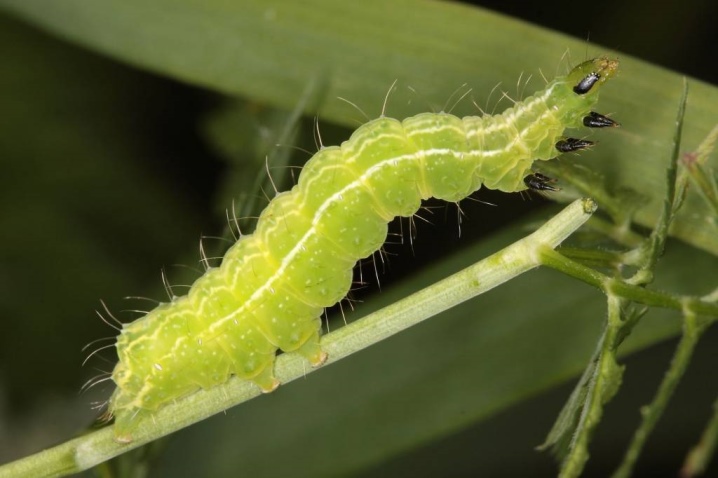
Exclamation
This scoop is polyphagous and can live in all parts of Europe and even in the northern regions. About 75 species of plants are affected, including tomatoes. In the northern part, it gives one generation, and in the southern part, two. A butterfly with a wingspan of 3 to 4.5 mm has a gray with yellow coloration, maybe with a brown tint. On her body there are rod-shaped, round or wedge-shaped spots.
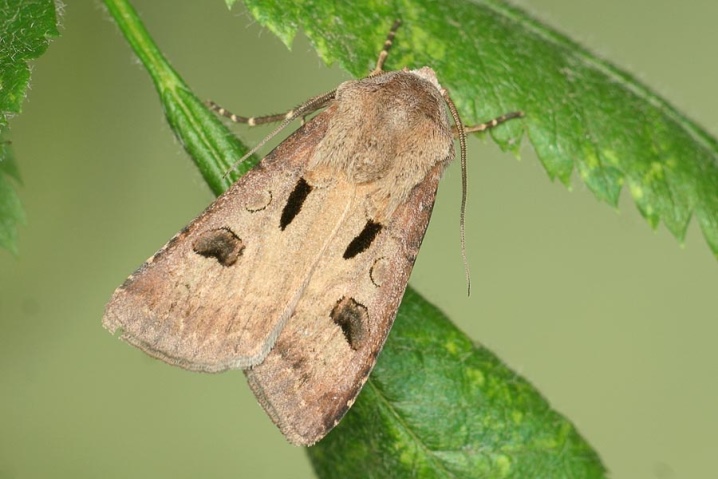
Caterpillars of the parasite are gray-brown or pale yellow, 3 to 5 cm long, covered with small spines, the head is red.The insect eats the stems at the bottom of the bush. Adult caterpillars tolerate wintering well even at very low temperatures. With the onset of spring, they eat off and pupate.
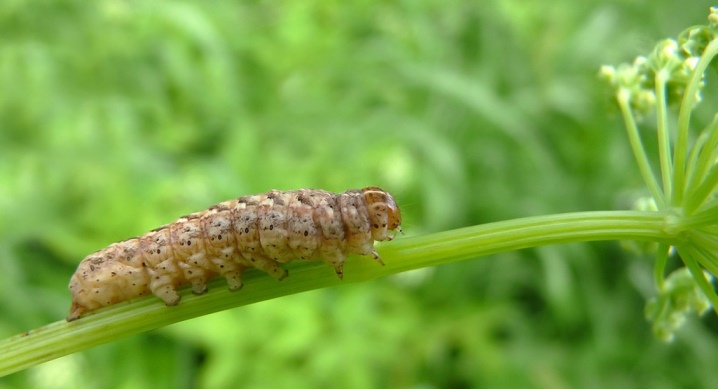
Winter
This scoop is a gnawing polyphagous pest that, in addition to tomatoes, eats another 150 crops. Its breeding area covers the entire European part of Russia, the Far East, South Siberia and the Transcaucasus. In the northern part of the country, it manages to give one generation, and closer to the south, the number of generations can reach 4. A favorable temperature for its development is considered to be from 16 to 30 ° C, and the minimum temperature is from 10 ° C.
The wingspan of a butterfly varies from 3 to 4.6 cm. The wings are usually gray or with a brown admixture, there are transverse stripes. Wedge-shaped, round, or kidney-shaped spots are sometimes present.

The caterpillar of this scoop is 4 to 5 cm long, without thorns, brown or gray in color. She has a red head, and on her body there are dark vertical stripes and small bumps.
In the first and second stages of life, the insect feeds on weeds, since in early spring the cultivated plants have not yet been planted.
Over time, pests grow and damage seeds, eat early shoots from other vegetables and herbs.
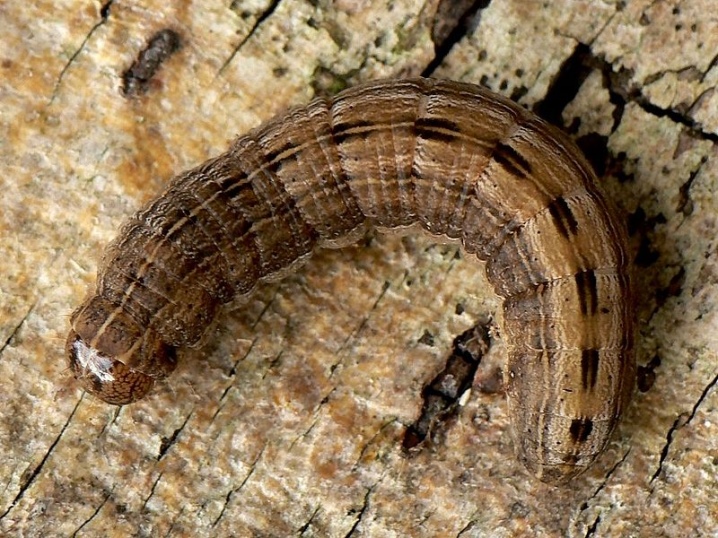
Greenhouse
Butterflies of this scoop are light gray in color, specks of various shapes are clearly visible on the wings, the larvae are gray with a dark stripe on the back. Pests feed on the leaves and fruits of all plants that are nearby.
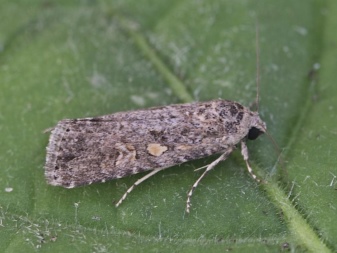
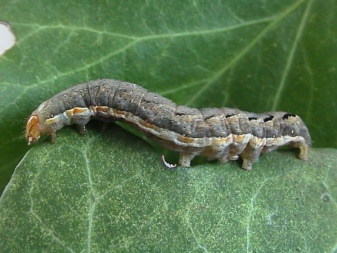
Reasons for the appearance
The main reasons for the appearance of any type of scoop is the lack of soil disinfection before planting tomato seedlings in a greenhouse or in open ground. As a result of the fact that the soil is not dug up for the winter, many pupae of this insect survive.
If you do not weed the weeds in the garden, then this further provokes the development and survival of the parasite, since weeds are additional food for them.
The remains of last year's plants in the garden can store the pupae of the pest, so they must always be removed and disposed of correctly, it is best to burn them.

Signs of defeat
Since the scoop itself is difficult to see in the daytime, its development can be identified by several signs:
- there are white areas on the leaves of tomatoes, inhabited by eggs;
- green or brown caterpillars have taken root on leaves and stems, they are visible especially in the evening;
- there are small holes on the leaves, which grow over time and leave only large veins behind;
- the buds are damaged, and with them the ovary on the fruits;
- in the fruits of tomatoes there are holes with eaten away pulp;
- the foliage turns black, dries quickly and falls off, the fruits acquire a dark brown color and begin to rot.
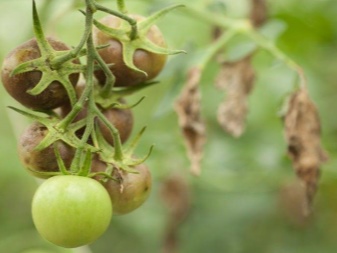

Control methods
Chemical
Chemicals are considered the most effective for the destruction of tomato scoops.
"Lepidocide"
Produced on the basis of the Bacillus thuringiensis var. kurstaki. The composition of the product includes components that have an intestinal effect on the pest, that is, the product actively acts after the insect begins to eat the plant. Delta-endotoxin included in the composition is activated in the intestine of the insect and violates its inner shell. Further, alkali from the intestine penetrates into the body of the caterpillar and septicemia sets in.
Thus, the parasite stops feeding within 4 hours after spraying, then it cannot move and dies within 3-7 days. The drug is used only if the pests need to be destroyed in the early stages, and their length does not exceed 10-12 mm. If the caterpillar is older, it is resistant to the drug.
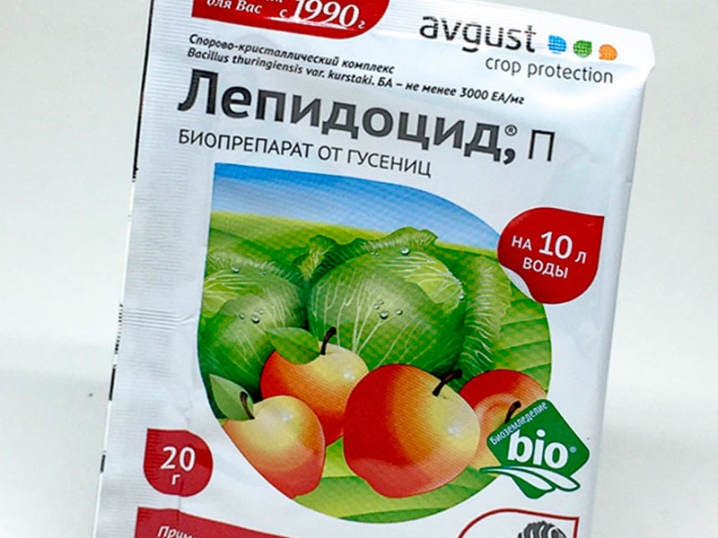
"Bitoxibacillin"
This drug will also help fight scoops. It is a biological agent that is included in an integrated system for protecting vegetables from lepidoptera. Physical activity begins 3-5 days after the treatment of the plant. The maximum effect of the drug is observed on the 10th day.After 2-3 weeks, the aftereffect begins, the reproductive capacity of the parasite decreases and the future generation becomes unviable.
Due to the eating of the plant in the intestine of the insect, the shell is damaged, the osmotic balance is disturbed, the alkali seeps into the body of the caterpillar, because of this, their death occurs.
Due to the fact that the product contains a B-exotoxin, it has a wide spectrum of action only for scoops, not for other beneficial insects.
The substance inhibits the synthesis of RNA in the cells of pests, as a result, a violation of metamorphosis begins, the digestive processes and fruiting of females decrease, as a result, the capacity of future generations. Each generation on the plant is treated with the drug once every 8 days.
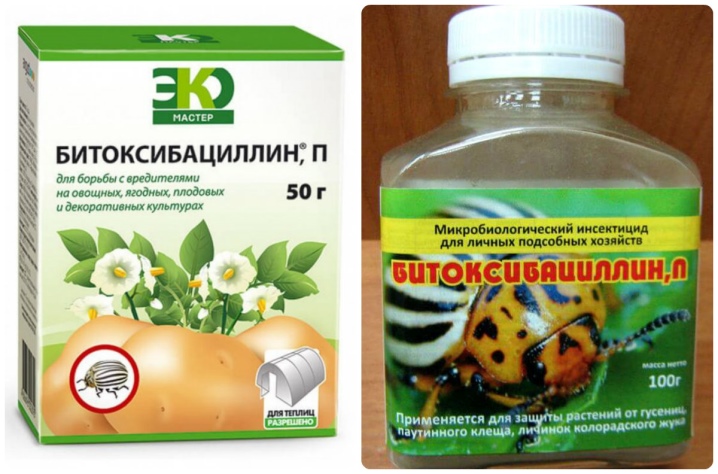
Fitoverm
An insecticide, which has a contact-intestinal effect, will help to get rid of the scoop. It is necessary to spray the plant with the diluted composition. It can be used even in hot weather. Fitoverm does not pollute the environment and quickly decomposes in soil and water. Its efficiency is 96-100%.
While eating a plant, the insect causes paralysis, and then death. The product protects the plant outdoors for up to 15 days, and indoors for up to 20 days. The drug is not phytotoxic and cannot be combined with other agents.
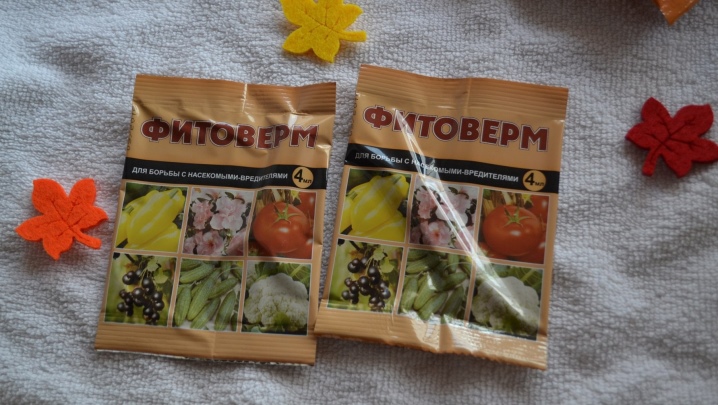
Folk
These products are less effective, but absolutely safe for the plant and the environment. Basically, they do not destroy, but have a deterrent effect.
- For example, solution mustard powder changes the taste of the plant and makes it unsuitable for the pest. To prepare it, you need to take 50 g of mustard powder and dilute in one liter of water, then boil for 10 minutes. After the solution has been infused for a day, it is diluted 1:20 with water. The finished product must be sprayed with a tomato bush.

- Scare a scoop away from a tomato will help onion infusion... To do this, take 350 g of chopped onions and pour 10 liters of water. Insist for about 12 hours and process the plant. Due to the strong odor, the scoop leaves the plant, as the tomato greens become unsuitable for nutrition.
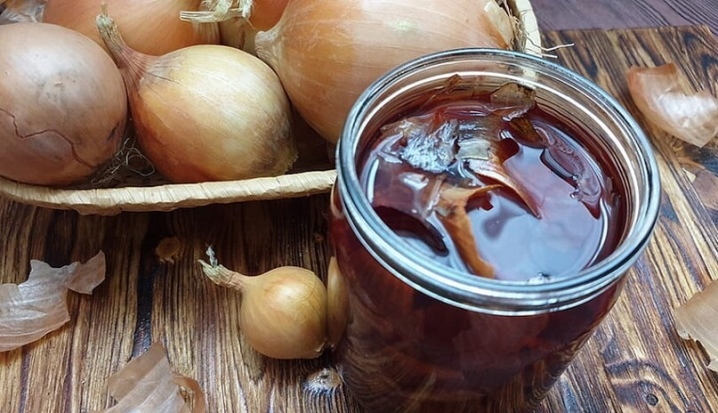
Prevention measures
To get a full harvest of tomatoes and protect your beds from the attack of scoops, you need to take regular preventive measures:
- before planting seedlings in the ground, the soil must be treated with a chemical;
- remove weeds from the garden throughout the season;
- dig up the beds in the autumn-spring period - this leads to the death of pupae;
- fruits and leaves of plants damaged by caterpillars must be immediately destroyed;
- regularly examine the leaves of the bush for eggs or caterpillars;
- plant plants with a specific smell between the rows of tomatoes, they will help scare off the pest - this can be garlic, basil or cilantro.
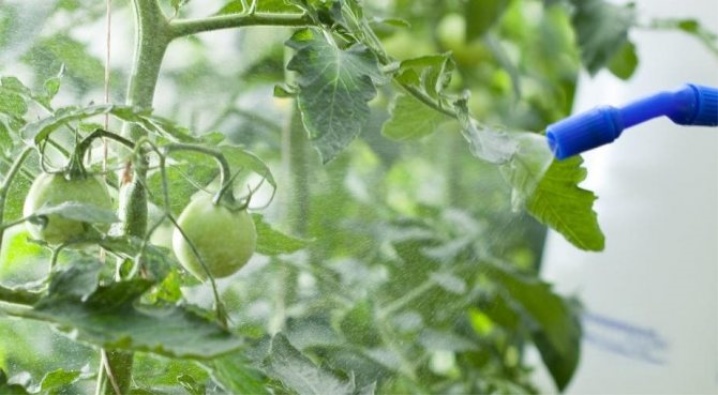
You will see how to deal with a scoop on tomatoes using Fitoverm in the next video.













The comment was sent successfully.